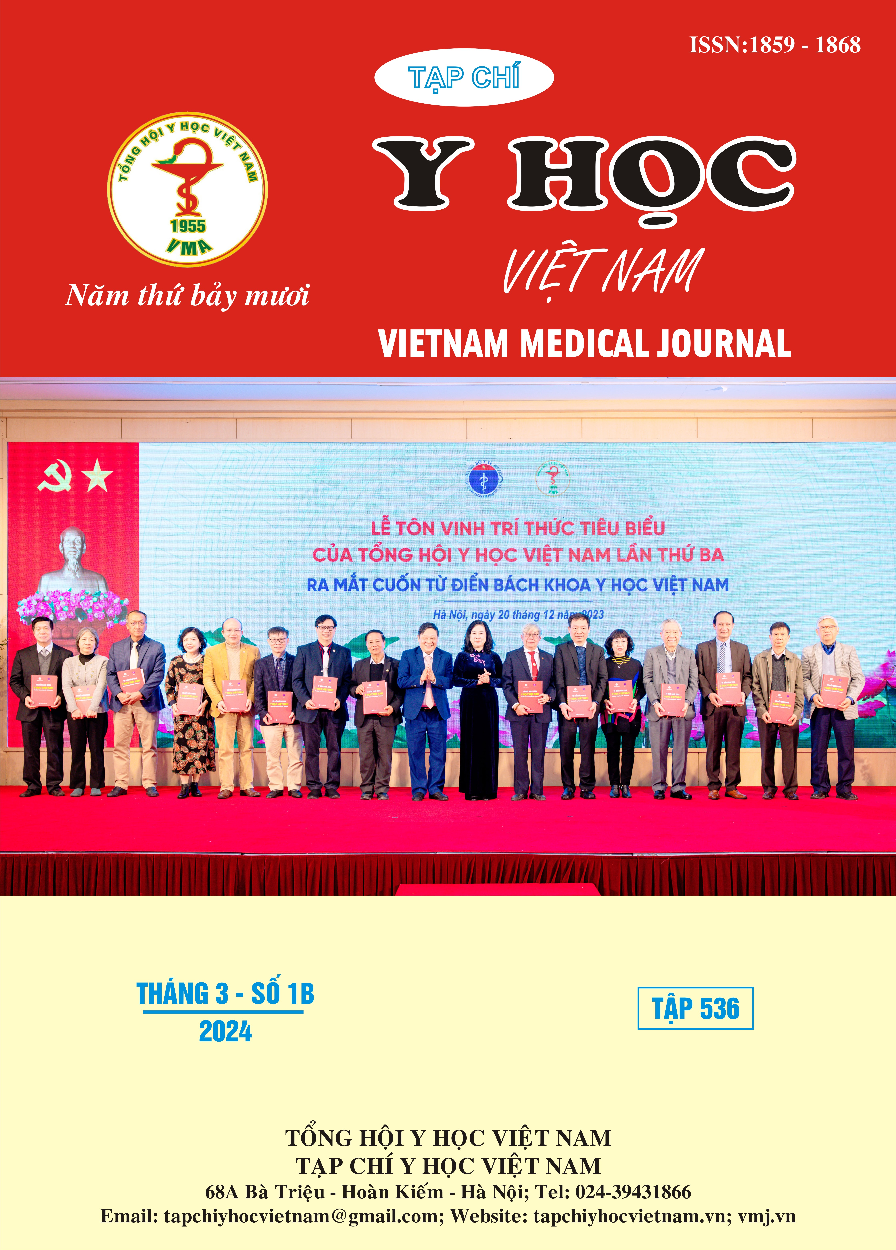ROLE OF 3-T MAGNETIC RESONANCE IMAGING TO IDENTIFY TRAUMATIC MENISCAL TEARS
Main Article Content
Abstract
Objective: Describe the characteristics of magnetic resonance imaging (MRI) 3.0 Tesla of traumatic meniscus tear and determine the value of 3.0 Tesla MRI in the diagnosis of traumatic meniscus tear compared with laparoscopic surgery. Methods: This is a cross-sectional, retrospective study. All patients clinically were diagnosed with traumatic meniscus tear at Military Hospital 175 from January 2022 to December 2022. Results: 119 cases. Men account for 65.5% and women account for 34.5%, mean age was 39.4 ± 14.3 years old (ranging from 12 to 74). There were only 70 cases where the cause of injury was investigated in which Domestic accidents accounted for the highest rate (38 cases, accounting for 48.6%). The rates of medial meniscus tear, lateral meniscus tear and both meniscus tears were 46.2%; 35.2% and 7.6% respectively. The rate of tearing of the posterior horn is the highest, followed by the anterior horn and body. Longitudinal tears were the most common type, accounting for 40% in medial meniscus tear 43% in lateral meniscus tear. The sensitivity, specificity, and accuracy of MRI for lateral meniscus tear were 80.0%, 80.4%, and 82.3%, respectively. The positive predictive value and negative predictive value were 66.7% and 90.9%, respectively. The sensitivity, specificity, and accuracy of magnetic resonance imaging for medial miniscus tear were 91.3%, 82.2%, and 85.7%, respectively; the positive predictive value and negative predictive value were 76.4% and 93.7%, respectively. Conclusion: MRI of the knee at 3.0 T is sensitive and specific compared with arthroscopy in the detection of meniscal tears, provides detailed information to help surgeons plan treatment strategies.
Article Details
References
2. Đặng Thị Ngọc Anh, Vũ Long, Phạm Minh Thông, Lê Quang Phương. Nghiên cứu đặc điểm hình ảnh và giá trị của cộng hưởng từ 1.5 Tesla trong chấn thương dây chằng, sụn chêm khớp gối. Điện quang Việt Nam 2020;41:86-92.
3. Fisher SP FJ, Del Pizzo W, et al. Accuracy of diagnosis from magnetic resonance imaging of the knee; a multicentric analysis of one thousand and fourteen patients. J Bone Joint Surg Am. 1991;73:2-10.
4. Ishani@, P, al e. Clinical, Magnetic Resonance Imaging, and Arthroscopic Correlation in Anterior Cruciate Ligament and Meniscal Injuries of the Knee. Journal of Orthopaedics, Trauma and Rehabilitation. 2018;24 52-6.
5. Jee WH, McCauley TR, Kim JM, et al. Meniscal tear configurations: Categorization with MR imaging. Am J Roentgenol. 2002;180:93-7.
6. Nguyễn Ngọc Thái. Nghiên cứu đặc điểm hình ảnh và giá trị của cộng hưởng từ trong chẩn đoán rách sụn chêm khớp gối do chấn thương. Luận văn bác sỹ chuyên khoa 2, Học viện Quân Y. 2010:102-23.
7. Phelan N RP, Galvin R., O'Byrne JM. A systematic review and meta-analysis of the diagnostic accuracy of MRI for suspected ACL and meniscal tears of the knee. Knee Surg Sports Traumatol Arthrosc. 2016;24(5):1525-39.
8. Phùng Anh Tuấn, Hoàng Thị Xuân Minh,. Giá trị của cộng hưởng từ trong đánh giá rách sụn chêm khớp gối do chấn thương. Tạp chí y học Việt Nam. 2020;2:292-7.
9. Porter M, Shadbolt B,. Accuracy of standard magnetic resonance imaging sequences for meniscal and chondral lesions versus knee arthroscopy. A prospective case-controlled study of 719 cases. ANZ J Surg. 2021;91(6):1284-9.
10. Rubin DA KJ, Towers JD, et al. MR imaging of knee having isolated and combined ligament injuries. AJR Am J Roentgenol. 1998;170:1207-13.


